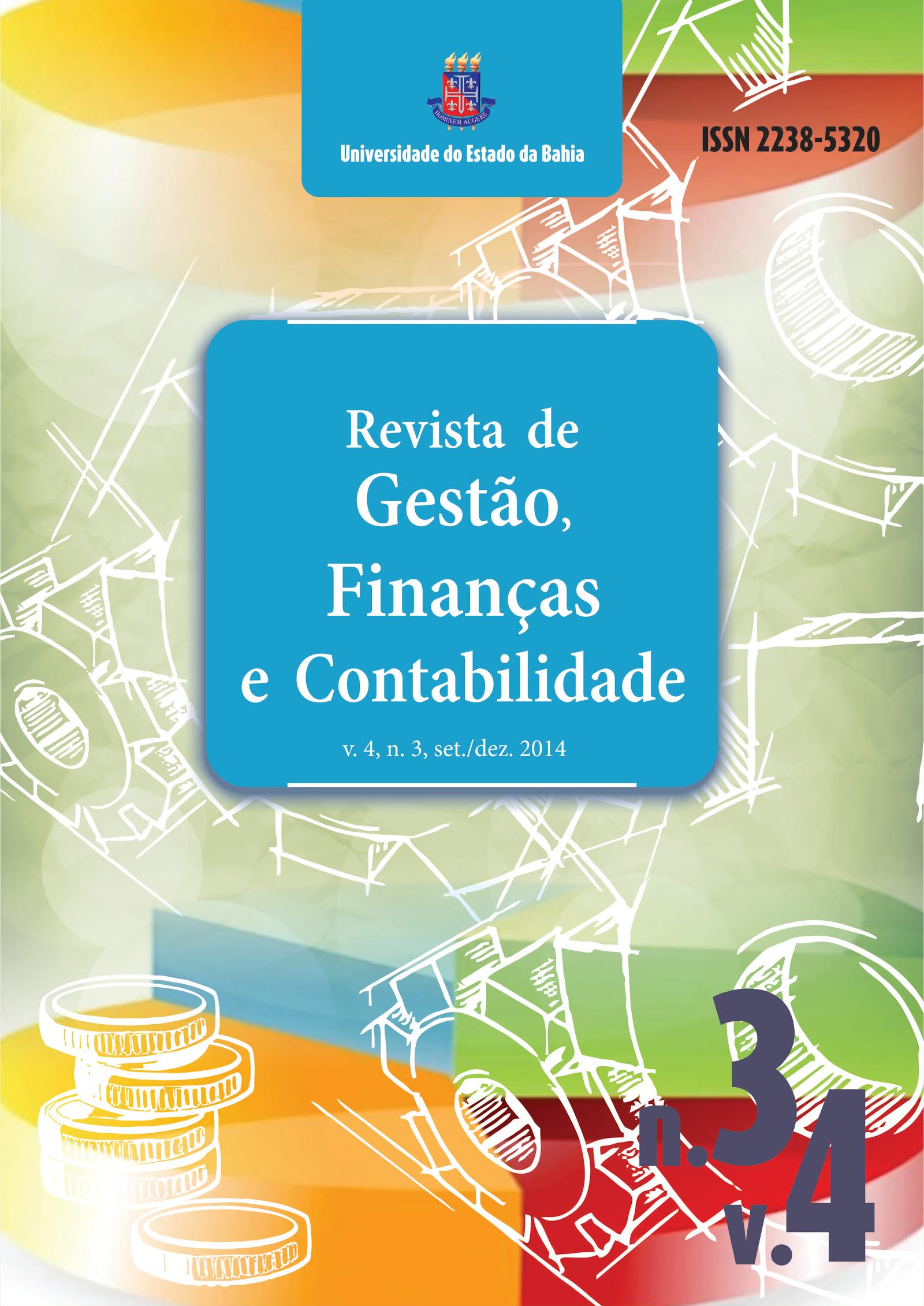SECTORIAL FACTORS AND THEIR INFLUENCE ON PRIVATE HIGHER EDUCATION IN BRAZIL: A MULTICASE STUDY IN SEVEN HIGHER EDUCATION INSTITUTIONS
DOI:
https://doi.org/10.18028/rgfc.v4i3.744Palavras-chave:
Competitividade, Fatores Setoriais, Fatores Estruturais, Educação Superior, Educação Superior PrivadaResumo
The private sector of education has been increasing its participation in Brazilian higher education. Between 1997 and 2007, the respective sector grew 394%, which represents an average of 17.30% per annum. However, from the year 2008 it can be seen that this expansion cycle came to an end, as the growth has stagnated in most reasonable rates around 3%, creating more challenges and the need of professionalization of the sector (HOPER, 2009). From this scenario, this work proposes to conduct a study of sectorial factors that influence private higher education in Brazil, in order to provide data and information for decision making by the government, maintainers groups, institutions maintained, and the whole community. For this, we conducted an exploratory study, of qualitative nature, by means of bibliographic data collection and interviews with managers from seven private higher education institutions nationally recognized. The results showed that there is a strong influence of the sectorial factors in private institutions of higher education, which should then monitor them properly. The executives interviewed highlighted the importance of these factors, which can turn into big enemies or powerful allies, in a scenario ever more challenging and competitive
Downloads
Referências
BARDIN, Laurence. Análise de Conteúdo. Lisboa: Edições 70 LTDA, 2009.
BARNEY, J.B. Firm resources and sustained competitive advantage. Journal of Management, vol. 17, 1991, p. 99-120.
______________. Loocking inside for competitive advantage. The Academy of Management Executive, Ada, v. 9, n.4, p. 49-61, Nov. 1995.
BARNEY, J.B.; HESTERLY, W.S. Administração estratégica e vantagem competitiva. São Paulo: Pearson Prentice Hall, 2007.
BUCKLEY, P.J.; PASS, C..L.; PRESCOTT, K. Measures of International Competitiveness: a Critical Survey. Jornal of Marketing Management, v.4, n. 2, p. 175-200, 1998.
FERRAZ, João Carlos; KUPFER, David; HAGUENAUER, Lia. Made in Brazil. Desafios Competitivos para a Indústria. Rio de Janeiro: Campus, 1995.
HOPER. Análise Setorial do Ensino Superior Privado-Brasil. Foz do Iguaçu, 2009.
______. Estudos de Mercado 2013. Foz do Iguaçu, 2013.
JENSEN, M. C. Theory of the firm: governance, residual claims, and organizational forms. Cambridge, MA: Harvard University Press, 2000.
KUPFER, D. Padrões de concorrência e competitividade. Anais XX Encontro Nacional da ANPEC, Campos do Jordão, 1992.
MALHOTRA, N. Pesquisa de Marketing: uma orientação aplicada. Porto Alegre: Bookman, 2006.
MARSHALL, A. Princípios de economia. v. 1, São Paulo: Abril Cultural, 1982.
MASS-COLELL, A.;WHINSTON, M.D.,GREEN, J.R. Microeconomic theory. New York, Oxford Univesity Press, inc.: 1995.
MEC. Censo da Educação Superior 2012. Brasília: Ministério da Educação, 2014.
MILL, J. S. Princípios de economia política. São Paulo: Nova Cultural, 1983.
NELSON, R.R.; WINTER, S. G.An Evolutionary Theory of Economic Change. Cambridge, MA: Harvard University Press, 1982.
PENROSE, E. T. Teoria del crescimento de la empresa. Madrid: Aguilar, 1962.
PETTIGREW, A.; WHIPP, R. Managing Change for Competitiveness Success. London: Blackwell, 1991.
PORTER, Michael E.Competitive Strategy. New York: Free Press, 1980.
______. A vantagem competitiva das nações. Rio de Janeiro: Campus, 1989.
PRAHALAD, C.K., HAMEL, G. The core competence of the corporation. Harvard Business Review, Boston, v. 68, n.3, May/June, 1990. p. 79-91.
ROUSSELET, F.; FARIA, G. Educação sob o Domínio do Capital Estrangeiro. UNE: União Nacional dos Estudantes. São Paulo. 2013.
RUMELT, R.P. Towards a Strategic Theory of the Firm. Competitive Strategic Management. Englewood Cliffs, NJ: Prentice Hall, 1984.
SCHERER, F.M. Industrial market structure and economic performance. Boston: Houghton Mifflin, 1980.
______. Industry structure, strategy, and public policy. New York: Harper Collins College Publishers, 1996.
SCHUMPETER, J. A. Capitalism, Socialism and Democracy. New York: Harper, 1942.
SHAPIRO, C. The theory of Business Strategy. Rand Journal of Economics, Spring, 1989.
SMITH, A. A riqueza das nações. Investigação sobre sua natureza e suas causas (Livro I). São Paulo: Abril Cultural, 1996.
TEECE, D.J., PISANO, G., SHUEN, A. Dynamic capabilities and strategic management. Strategic Management Journal, vol. 18:7, p. 509-533, 1997.
WERNEFELT, B., MONTGOMERY, C. Tobin´s Q and the Importance of Focus in Firma Performance. American Economic Review, vol 78(1), p. 246-250, 1988.
Downloads
Arquivos adicionais
Publicado
Edição
Seção
Licença
Autores que publicam na RGFC concordam com os seguintes termos:
- Autores mantém os direitos autorais e concedem à revista o direito de primeira publicação, com o trabalho simultaneamente licenciado sob a Creative Commons Attribution License (https://creativecommons.org/licenses/by-nc/4.0/), permitindo o compartilhamento do trabalho com reconhecimento da autoria do trabalho e publicação inicial nesta revista;
- Autores têm autorização para assumir contratos adicionais separadamente, para distribuição não-exclusiva da versão do trabalho publicada nesta revista (ex.: publicar em repositório institucional ou como capítulo de livro), com reconhecimento de autoria e publicação inicial nesta revista;
- Autores têm permissão e são estimulados a publicar e distribuir seu trabalho online (ex.: em repositórios institucionais ou na sua página pessoal), já que isso pode gerar alterações produtivas, bem como aumentar o impacto e a citação do trabalho publicado. Porém deve-se observar que uma vez aprovado pelos avaliadores, o manuscrito não poderá sofrer mais alterações. Caso o autor deseje fazê-lo, deverá reiniciar o processo de submissão.




